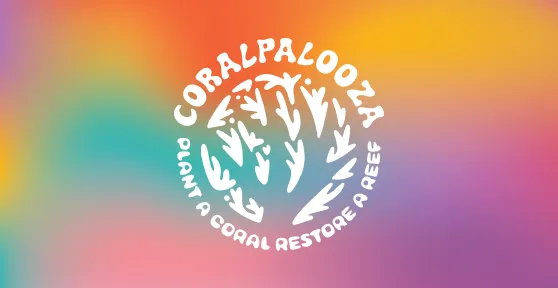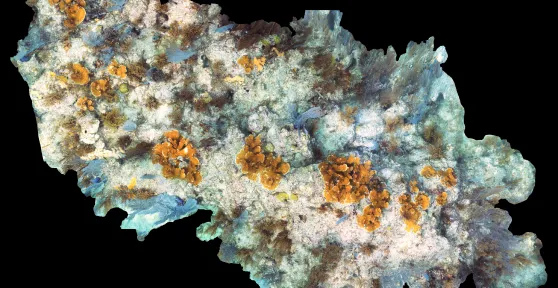Coral degradation is occurring globally at an alarming rate. According to NOAA Fisheries, 30-50% of shallow tropical and subtropical coral reefs have been lost to a variety of factors.
In response, communities worldwide have taken steps to safeguard our global reef ecosystems, with one of the most noteworthy efforts being widespread ecological restoration projects. These projects involve techniques such as coral outplanting and habitat rehabilitation, revitalizing coral populations and fostering the longevity of marine biodiversity.
Beyond repairing our ecosystems to a state of stability, coral restoration also creates livelihoods and economic opportunities for communities worldwide, generating ecotourism interest, providing professional practitioner positions, and improving the health of fisheries.
As we address the reality of global coral degradation, it has become increasingly clear that collective efforts are necessary to mitigate the loss of these ecosystems. Through restoration projects, we can ensure that long-term coral reef resilience leads to benefits for the environment and our coastal communities.
What is Coral Restoration?
Coral restoration involves human-led efforts to rehabilitate tropical marine ecosystems that have experienced prominent levels of degradation, intending to promote long-term and large-scale ecosystem recovery. These interventions have allowed us to offer a helping hand in reviving shallow coral reef habitats that have suffered from stressors such as climate change, destructive fishing methods, and pollution. This approach ensures that coral ecosystems can thrive independently and adapt to environmental changes more efficiently.
Each coral restoration project is unique in its approach and provides dynamic solutions to ecological rehabilitation. Due to the various marine conditions that exist around the globe, restoration projects are not one-size-fits-all, which has resulted in an array of restoration methods. Current coral restoration approaches include steel reef spiders, stake and rope, concrete domes, and at Coral Restoration Foundation™, we utilize our Coral Trees™ and Cerulean™ technology.


After years of testing different methods, Coral Restoration Foundation™ has been most successful with the Coral Tree™ design we now employ, which enables us to grow coral fragments rapidly. Suspended in the water column above the natural substrate, coral fragments in our Coral Tree™ nurseries are exposed to high nutrient loads, 360° of sunlight and the possibility of omnidirectional growth for certain species. In just six to nine months, a coral fragment the size of a finger can grow to be the size of a football. This method has been recognized as one of the most successful in-water approaches to growing branching corals globally.
The Positive Effects of Coral Restoration
As ecological degradation persists, coral restoration efforts allow ecosystems to build resilience and recover from environmental pressures, such as climate change and destructive fishing practices like dynamite fishing. These interventions jumpstart the natural recovery of coral reefs, protecting their essential ecological functions and structural integrity.
Particularly along the Florida Reef Tract, coral restoration efforts have proven to be crucial for marine environments. Live corals continue to thrive along the Florida Reef Tract after this summer’s disturbance event, thanks to the dedicated restoration efforts of organizations like the Coral Restoration Foundation™. Additionally, there are certain coral genotypes that can no longer be found in the wild due to disease and other stressors, but can still be found in our coral nurseries, marking them as crucial genetic banks.

Once they reach an adequate size, corals from our nurseries are planted back on the reef substrate. Over time, these outplants grow larger and fuse together, forming a thicket of healthy corals. These restored habitats will provide space for other species to thrive and, in turn, will seed nearby reefs that have not yet experienced human intervention. Without these restoration projects, we run the risk of losing these ecosystems and everything residing in them forever.
The Value of Coral Reefs
The global economic value of a healthy coral reef ecosystem is immeasurable. From providing food security and coastal protection to livelihoods for practitioners, coral restoration’s benefit is widespread and long-term.
In areas of the Florida Reef Tract, certain marine species that depend on reef-dominated ecosystems have felt the effects of prolonged degradation, such as diminished coral coverage and heightened algae presence. As a result, marine-related industries throughout the Florida Keys have been adversely affected.
Additionally, coral reefs prevent strong waves from reaching the shore, marking them as an important form of protection for coastal communities. As weather patterns become increasingly unpredictable due to climate change, communities in tropical and sub-tropical coastal regions will be relying on healthy coral reefs and mangrove ecosystems for natural protection more than ever before.
Employment opportunities are created through coral farming, nursery maintenance, and monitoring, all which require meticulous work. These projects also generate income through eco-tourism, attracting crowds of marine stewards around the world. Coral restoration stands as a universally advantageous endeavor, broadening livelihood opportunities for communities worldwide and highlighting its significance as an industry worthy of ongoing support.
How to Make a Difference For Coral Reefs
There are numerous ways to contribute to coral restoration, from actions you can take right at home to direct involvement.
Starting with your own lifestyle choices, you can make a significant difference in conservation efforts. Small actions, like choosing reef-safe sunscreen, minimizing your carbon footprint, and making environmentally conscious purchasing decisions, can collectively bolster the success of coral restoration initiatives globally.
Coral restoration projects often rely on grants and donations for funding. Donating to a cause that resonates with you is a powerful way to join the conservation movement. If you are a diver and want to contribute in a hands-on way, there are volunteer and internship programs as well as community events such as Coralpalooza™ Dive Days 2024 that allow you opportunities to practice coral restoration first hand.
By educating yourself about coral restoration, you can become a knowledgeable advocate for policies that protect corals, thus improving the effectiveness of restoration projects around the world. In the face of global coral degradation, our collective action becomes our most powerful tool.
Written by: Bailey McDougall and Tess Noone, CRF Interns




